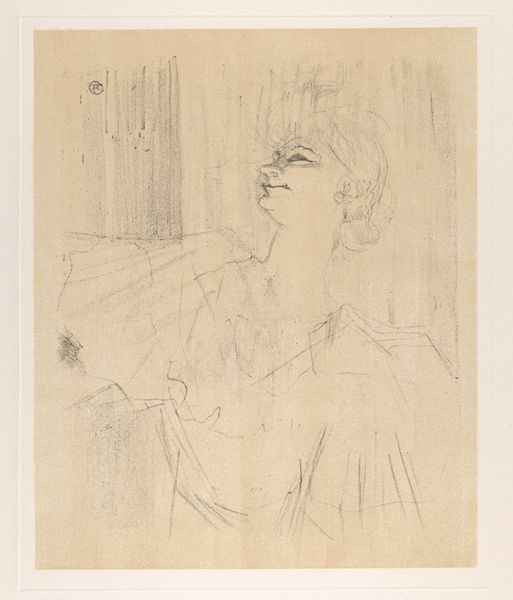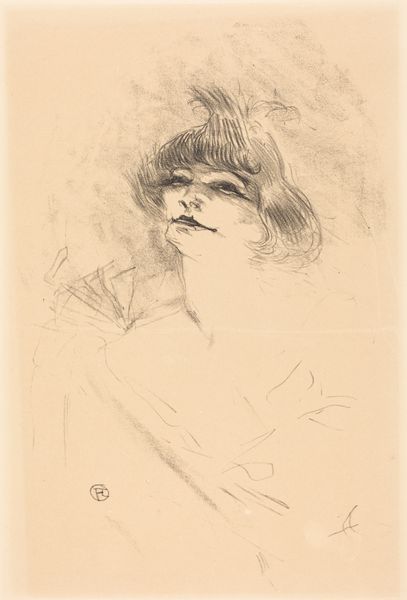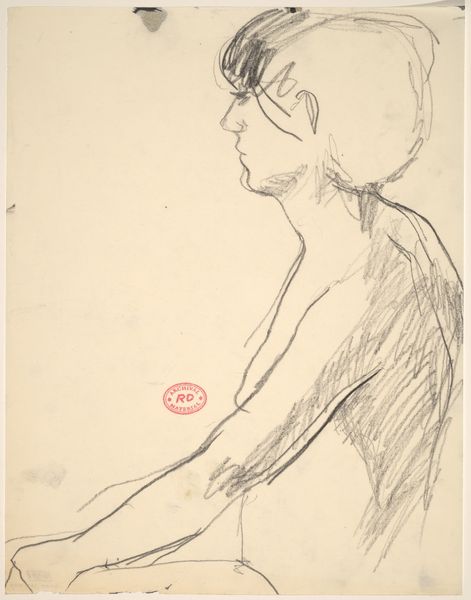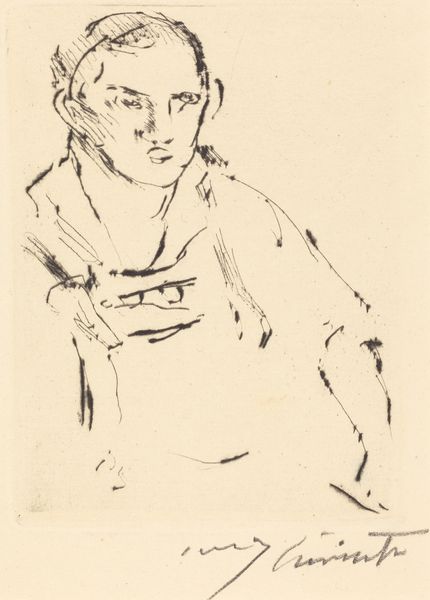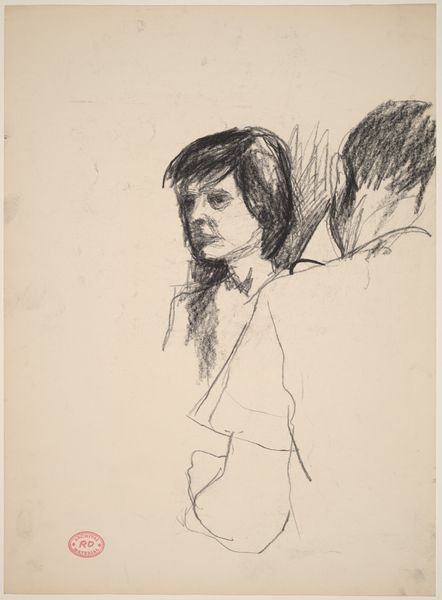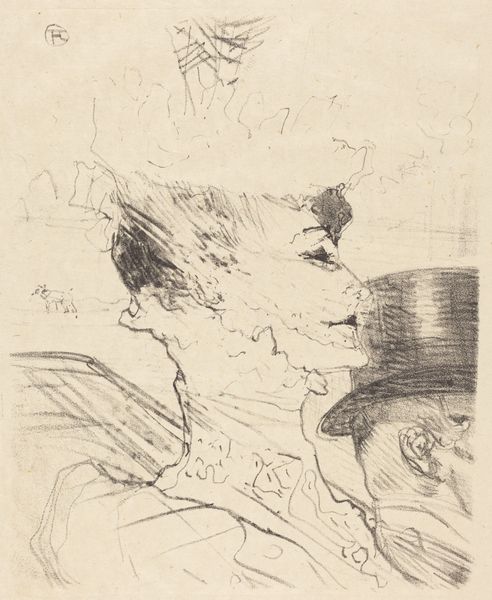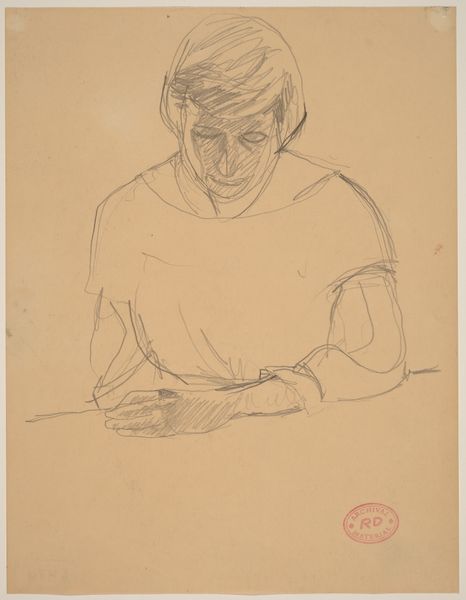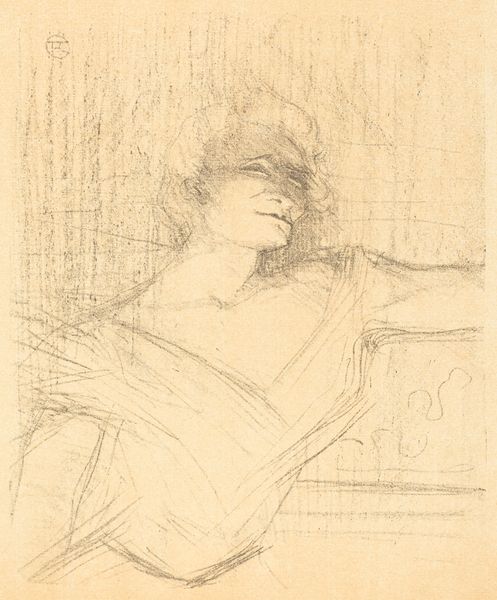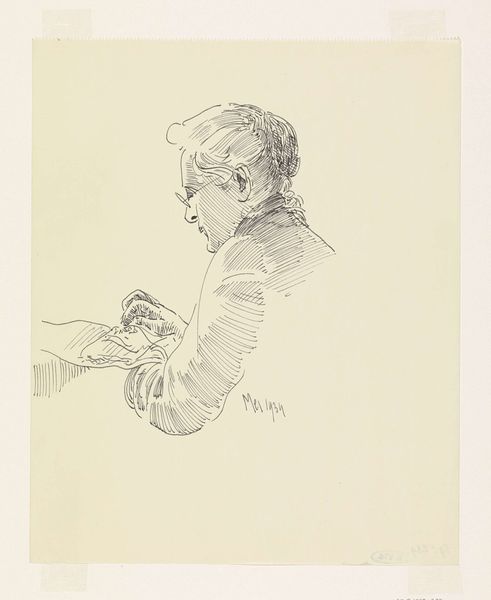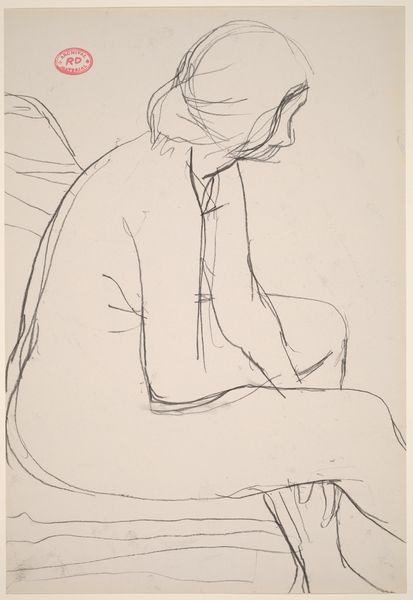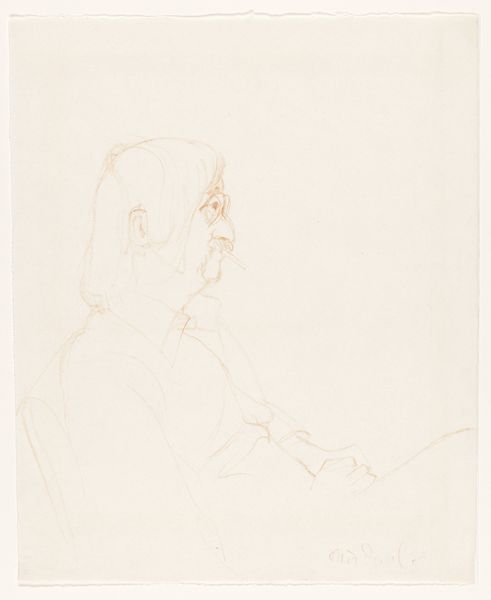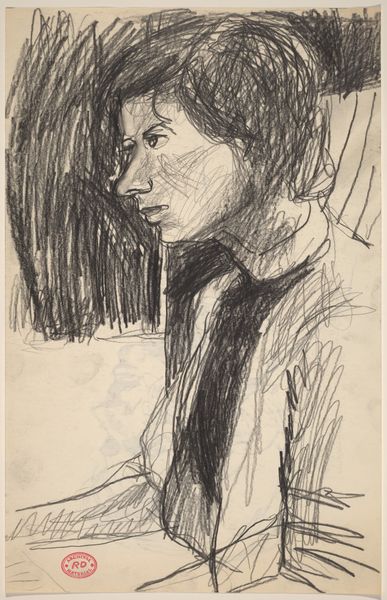
Copyright: National Gallery of Art: CC0 1.0
Editor: Here we have Toulouse-Lautrec’s 1895 pencil drawing, "Mlle. Pois Vert," on paper. The sketchy quality gives it a sense of immediacy. What social or historical contexts are important when we interpret this portrait? Curator: This seemingly simple sketch exists within a complex web of power dynamics. Lautrec depicted performers, prostitutes, and other figures marginalized by bourgeois Parisian society. Think about who had the power to create these images and who was being represented, often without agency. How does that gaze affect our understanding of the artwork? Editor: It feels like he is capturing a private moment, not posing her for a formal portrait. Does that contribute to or challenge these power dynamics? Curator: It is true, he eschewed conventional portraiture, but this supposed "intimacy" should be interrogated. Was it truly intimate, or did it perpetuate the voyeuristic consumption of marginalized individuals? Her downward glance is suggestive of being reserved or submissive, don’t you think? It is essential to ask how gender, class, and representation intersect here. Editor: So, instead of seeing just a portrait, we should also consider it as a statement about the artist's view of the subject’s position in society at the time? Curator: Exactly. And how that view inevitably reflects—and reinforces, or challenges—the social structures. What do you make of the stark black choker? How does that add another layer of meaning to the work? Editor: I didn’t even notice that. That definitely changes how I see the piece. Thank you for this eye-opening approach! Curator: It’s about seeing beyond the surface and questioning the narratives embedded in art. Glad I could offer a different lens.
Comments
No comments
Be the first to comment and join the conversation on the ultimate creative platform.
